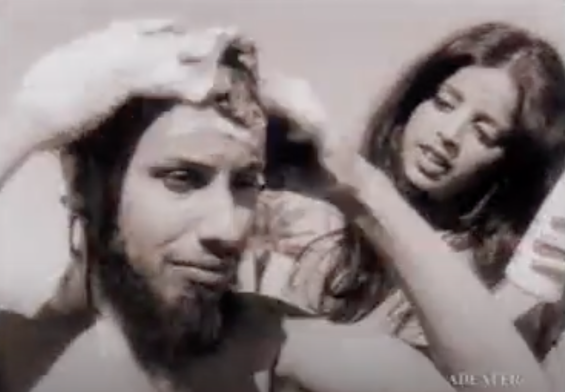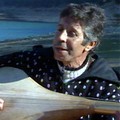Ramadan has long been a month of creativity for Moroccan TV broadcasters. It is also a month that marks our childhood, with many fun, entertaining, and sometimes funny ads it features. Here is a list of five iconic ads from Moroccan television—creative, funny, and most of all nostalgic.
Moroccan Quais and Leila
When it comes to classic original ads from Moroccan television, Palmolive’s Moroccan Quais and Leila are unforgettable. In this black-and-white ad, the story of Layla and Majnun is unconventional and has a happy ending—all thanks to a shower.
In the ad, Moroccan actor Abdelkader Moutaa, who plays the role of Quais, is in love with Leila, reciting poetry near her tent in an oasis set to depict a 7th-century Arabian village.
Regardless of tribal considerations or Leila’s reputation, Quais is rejected by Leila’s family due to his looks, particularly his hair. «You again? I warned you before to leave us alone and mind your dirty hair», Leila’s father tells Quais.
But in 7th-century Arabia, Quais has access to shampoo—Palmolive. After a shower and a thorough scrub of his dirty hair, he manages to accomplish what the original Quais couldn’t: marry Leila. With freshly washed hair, Quais meets the father, and the story of Majnun ends before it even begins. «It’s much better now, Quais. I give you the hand of my daughter Leila; she is yours, and you are hers», declares the father, seconds before transitioning to a shot of Palmolive—the shampoo that solved Arabia’s longest and oldest love story.
Weird convincing skills
This Tide ad from the early 1990s uses the weirdest convincing methods. The ad stars a Moroccan woman who is approached while grocery shopping in the souk. She is asked to try Tide’s new formula for fifteen days. But she categorically refuses, in a very firm way: «I WON’T TRY IT, NOT EVEN FOR ONE DAY».
However, with little convincing—just another «just try it»—she agrees. Seconds later, the scene cuts to her at home, line-drying her laundry. In the same firm and serious fashion, she expresses her astonishment at the product.
This ad made its way onto social media years after it aired on TV, becoming part of Morocco’s meme culture online. Some meme creators even changed the dubbing to fit a more humorous script.
The ad also gives us a glimpse into how Moroccan women dressed at home while doing chores. The woman in the ad was dressed in a djellaba while at the souk and in a caftan at home while doing the laundry.
A childhood melody
One ad etched in the memories of 80s and 90s kids is that of Aicha—the Moroccan little girl who makes jam from scratch.
The ad we’re referring to, produced in 1977 by the Moroccan brand, features an animation of three barefoot young children walking through a forest to go to Aicha’s plant, where they make jam from fresh fruits and package it all under her guidance, accompanied by Aicha’s emblematic music.
The theme song became a trademark of other versions of this ad that animated our childhood, with different types of products from Aicha, such as canned tomatoes and other jams.
«Anari jabha f rassou»
Ads were not just about products; some raised awareness too. One famous ad aired in 1984 became a classic with the phrase «Anari jabha f rassou» («Oh my God, he had it coming»).
The ad raises awareness about car accidents happening in villages when drivers fail to respect the nature of the Moroccan countryside, particularly animals crossing the streets.
The ad starts with a worst-case scenario: a driver ignores a road sign while driving in the Moroccan countryside. He has to brake because a shepherd is crossing the road with his cattle. The driver loses control of the car, and an accident occurs.
A passerby, in this case, the late Moroccan theatre director, actress, and politician Thouria Jebrane (who later became a Culture Minister), alerts others to the accident. In her traditional Moroccan countryside attire, she shouts, «Anari jabha f rassou», emphasizing that the driver made a mistake, which he paid for.
Vegetables performing Ahwash
Creative ads didn’t spare any ideas, especially during Ramadan when consumption peaks. One such memorable ad is from the early 2000s for Afia vegetable oil. What made it catchy was that it was in Tamazight.
The ad showcased a folkloric spectacle of vegetables performing Ahwash, a Shilha-style collective performance that includes dance, singing, poetry, and percussion from southern Morocco.
The vegetables took on roles as dancers, singers, and female dancers in the style of Tahihit. They performed a song praising the benefits of the product in Tachelhit.
And what about you? Which Moroccan ad marks your childhood ?





 chargement...
chargement...












